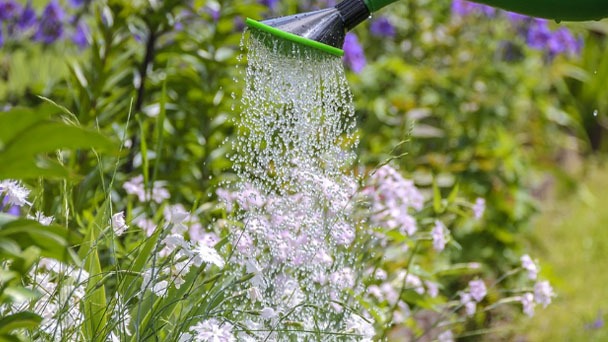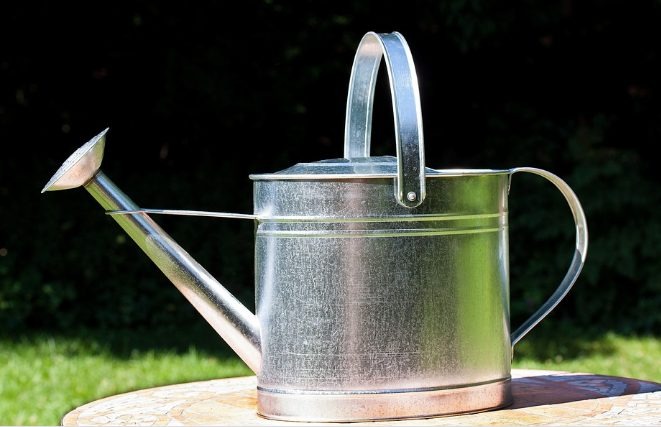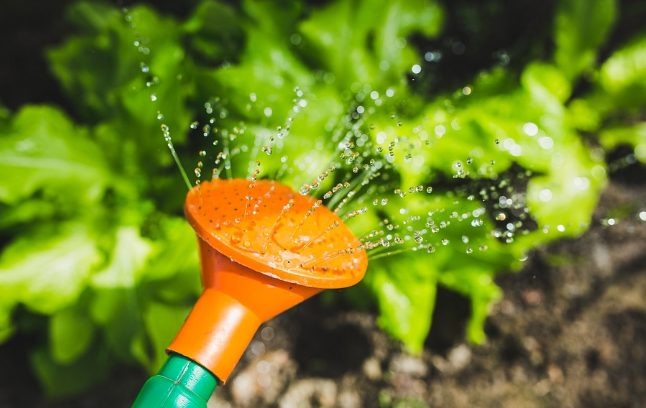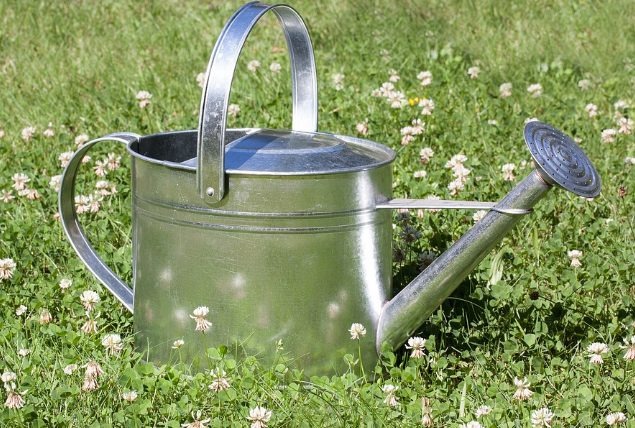Worst Time To Water Plants - Tips & When to Water
Written by Ivy
Jan 21 2023

Your plants have likely been brought inside from the cold by now because winter is quickly approaching. Your plants are now at a comfortable location in their pots. Knowing when to water your plants is best and worst is the only thing left to do.
Watering your plants is essential, even though it's probably not the first thing that comes to mind when you wake up. Sadly, remembering it can be one of the most challenging tasks. Your plant might be bouncy one day and droopy the next. What is the worst time to water plants? Find out by reading on!
Worst Time to Water Your Plants
As it turns out, the afternoon, when temperatures are at their highest, is the worst time to water your plants. Be cautious if you're tempted to water during the hottest part of the day because this could hurt your plants.
When you water in the afternoon, a lot more water evaporates and is lost. The water evaporates from the soil's top in the heat because it doesn't have time to properly percolate into the roots of the plants. Mornings are the least productive time of the day because less water will penetrate deeper layers of the soil to hydrate plant roots.
It's best to wait until dusk or early morning to water your plants if you live in a dry climate or have very low humidity levels inside your home. By doing this, the sun won't reach it first.
Best Time to Water Your Plants

- Early morning: When you wake up early in the morning, the weather is still cool, so any water you put on your plants won't evaporate for a while. This will allow for better irrigation than during the day, when the air is warm and your plants are cooler.
- Late morning: Additionally, now is a good time to water because the weather is warm enough for your plants to still be in the shade, which is what they require to survive. Later in the afternoon is typically when it gets the coolest, so you don't want to overwater your plants at this time of day.
- Early afternoon: By this time of day, the temperature has risen, making it unlikely that your plants will still be in the shade. Use your finger to test the soil around the plant to see if it is dry before watering it if you find that you need to water your plants at this time of day. Drenching your plants could lead to root rot and mold because there won't be enough air for them to breathe in the soil, so you don't want that to happen.
- Late Afternoon: Even though the temperature might have increased by this point, your plant will still be in the shade, and you might notice that it is already starting to get a little chilly outside. Even so, you don't want to overwater at this time of day because if the soil is dry, your plant could develop root rot or even perish.
Tips on How to Water Your Houseplants
One easy task that many people neglect is watering houseplants. Furthermore, the leading cause of dying indoor plants is overwatering. Giving your plants the water they require on a regular basis is crucial if you want to keep them healthy and alive. Here are some tips for making sure your plants stay hydrated:
To determine if your plants need watering, check the moisture level of the soil frequently. The best way to do this is to gently insert your finger up to two inches into the ground without disturbing the plant's roots. Watering is required if the soil feels dry.
Plants that bloom are one illustration of this. Regular, but not excessive, watering is required for your flowering plants. This is because flowering plants require more energy to produce your beautiful blooms. Overwatering is preferable to underwatering if you are unsure of how much water they are receiving.
The soil surface will begin to appear lighter in color as it dries out. Soggy soil will have a darker appearance, which is the opposite of what is described above. You'll notice that it begins to crack and pull away from the pot's sides if you continue to dry it out. If this occurs, the roots of your plants may already be compromised. The point is that a plant can be harmed or even killed by soil that is either too wet or too dry.
You typically don't need to be concerned about chemicals in the water if you're hydrating your plants with tap water. Your tap water's fluoride or chlorine content, however, may occasionally result in minor issues. Although most plant varieties can withstand these elements without harm, some species, including carnivorous species, ti plants, and calatheas, cannot.
Using rainwater instead of tap water is better for your plants and your wallet. For a constant supply, you can harvest your own in your own backyard.
Pay attention to the type of plant you are watering, and change your watering schedule accordingly. While some plants, such as cacti and succulents, require less water than others, tropical houseplants may require more frequent watering to thrive. Before giving your plant a drink, make sure you've done your research so you can make an educated choice.
How to Water Your Plants
You can water your plants in a variety of ways. When watering your potted plants from the top, using a small spouted watering can help keep as much water off the grass as possible. You run the risk of contracting a disease if the foliage becomes completely wet.
Approximately an hour later, after the water has drained through the drainage hole in the pot's bottom, discard any excess water. By using this technique, you can make sure that every time you water your plants, you are moistening the entire soil mass, not just the top inch.
Alternatively, watering plants from the bottom is a simple way to guarantee that they always receive a good soak. Simply set your plant's pot in a saucer or pan of water and let it sit there to receive water until the topsoil is moist. Once the remaining water has been drained from the soil, take the pot off the saucer and put it back where it belonged.
If you frequently water your plants from the bottom, you might notice some salt buildup on the top layer of soil. To remove the salts, try watering from the top. However, avoid letting the already salty mixture that coated the soil absorb again. The best course of action in this circumstance is to replace the soil.
The Best Type of Water for Plant Growth
Let's start with the fundamentals. Different types of water have different properties, and some might not be as good for your plants as others. There are many choices, including distilled water, tap water, rainwater, and spring water in bottles.
1. Rainwater
You have probably noticed how much healthier your plants look and grow after a good rain. As you may know, the air is 78% nitrogen and nitrogen is one of the most important elements involved in plant growth. A portion of the nitrogen produced by rain falls to the ground, where it is easily absorbed by plants through their roots and leaves.
Another benefit of rainwater is that it also contains more oxygen. Even during prolonged rain events, your plants won't experience root rot because rainwater is highly oxygenated.
Rainwater becomes slightly acidic when it reacts with carbon dioxide and other airborne minerals, and once it contacts the soil, it aids in the release of vital nutrients for plant growth like manganese, copper, zinc, and iron.
As a final point regarding rainwater, collecting it in barrels will give you a great (free) reserve of water that is of excellent quality for the future.
Note that some states prohibit collecting rainwater.

2. Bottled Spring Water
Although this option is typically far too expensive for outdoor use, it will have a significant positive impact on your indoor plants.
Bottled spring water contains natural minerals that are needed for growth in plants. The oxygen and minerals in spring water are added as a result of the objects and rocks it runs over.
So, while not as good as rainwater, bottled spring water rates a very high second.
3. Tap Water
Depending on what part of the world you live in, your tap water is completely useable for your plants. It is the best option if you only use a garden hose for irrigation or watering and do not collect rainwater.
Chemicals like sodium, fluorine, and chlorine are frequently found in drinking water systems. In small doses, these chemicals can prevent the plants from reaching their full potential even though they might not harm your plants.
Before using tap water, make sure that your plant is not prone to chlorine or fluoride toxicity.
4. Distilled Water
This is the worst of the four types of water The pH of perfectly distilled water is 7, which is neutral, as I've noted here. Plants prefer some acidity, typically 6.8 or lower.
You can get very close to pure water by distilling water, which removes all contaminants and removes bacteria, organic and inorganic chemicals, heavy metals, and other contaminants. But even though it is pure, it still contains nothing.
Is It Bad to Water Plants at Night?
If your plants are wet when you are outside during the day or if it has been a lot of rain recently, these are two situations where you might want to water your plants at night. Before watering your plants, the soil should be moist, but if the soil is already cool, it might not be necessary. Nevertheless, it is still advised to water your plants in the morning.
What Time is Too Late to Water Plants?
When you water at the wrong time of day, the soil will cool down too much and prevent your plant from growing and surviving. On the other hand, if you don't water your plants at all, they may bloom too early and then wilt or die altogether (a phenomenon known as "blooming before blooming").
The plants will be watered at noon, but what will happen?
A lack of air in the soil can cause root rot or mold because the majority of the water will evaporate before it reaches the roots (up to 55% of the water that hits the soil surface may evaporate).
Final Thoughts
As you can see, knowing when to water your plants best and worst depends on how well you plan to take care of them. This information may help your plant live longer and develop into a robust, healthy plant. Keep in mind that, generally speaking, watering your plants in the morning is preferable to doing so at night and that doing so in the middle of the day is detrimental to their health.

FAQs
What is the Best Time to Water Plants in Hot Weather
In hot weather, watering should be done in the early morning hours when it is cooler. By doing this, more water will be able to reach the roots before it evaporates in the heat. There may be times when scheduling morning watering is impossible. In this situation, water the plants in the late evening before going to bed.
How Long to Water Plants With Hose
Set up a heavy trickle with the hose at the base of the plant. If you don't know how long to water new plants for, aim for 30 to 60 seconds for small plants and longer for larger plants while moving the hose to a few different spots all around the plant. When the soil feels moist, refrain from watering.
How Often to Water Outdoor Potted Plants
It's time to water if the soil feels dry. It might be enough to water container plants every two to three days in the spring and fall, as well as in colder climates. Except for succulents and other drought-tolerant xeriscape plants, summertime container plants in warm climates typically need daily watering.
How Much Water Does a Plant Need Per Day
One square meter of bench top covered in leaves will require 4-6 liters of water per day, according to the general rule of thumb for assessing the root health and irrigation requirements of a system. A new plant or one whose square meter is not entirely covered in leaves will typically use 3 litres per day.
How Often Should You Water Outdoor Plants
Watering container plants every two to three days in cooler climates and during the spring and fall may be adequate. Except for succulents and other drought-tolerant xeriscape plants, summertime container plants in warm climates typically need daily watering.
Latest Updated
- Benefits of Bugleweed - 7 Science-backed Health Benefits
- Bugleweed Dangers & Side Effects - Is It Poisonous?
- How to Plant Evergreen Trees - What You Should Know
- When to Plant Evergreens - Grow Guide for Evergreen Trees
- 12 Wonderful Evergreen Shrubs for Your Garden
- 12 Popular Evergreen Plants with Pictures for Beginners
- When And How To Prune A Lilac Bush Like a Pro
- How to Grow & Care for Lilac Vine (Hardenbergia Violacea)
- Japanese Lilac Tree (Syringa Reticulata) Care & Propagation Guide
- Shumard Oak Pros and Cons - What to Know
Popular Articles
- Winter maintenance of Antirrhinum Majus
- How to Grow Terminalia Mantaly Tree
- How to Grow and Care for Crossostephium Chinense
- How to grow Antirrhinum Majus in spring
- Peristeria Elata (Dove Orchid) Profile: Info & Care Guide
- Underwatered Snake Plant (Sansevieria Trifasciata) - Signs And How To Fix
- How to Care for Brazilian Jasmine Plant (Mandevilla Sanderi)
- How to Grow & Care for Graptopetalum Purple Delight in Summer
- Rosa Chinensis (China Rose): Plant Growing & Care Tips
- How to Care for Baby Sun Rose (Aptenia Cordifolia)